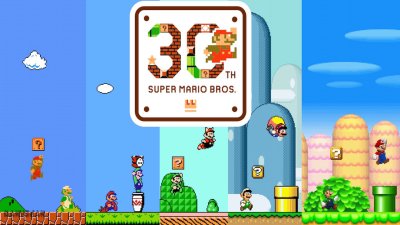The way people reacted to the E3 reveal of Captain Toad: Treasure Tracker said more about them than the game. Essentially a fleshed out version of the “Adventures of Captain Toad” minigames found in Super Mario 3D World, it polarized audiences. Some (let’s call them “fun-haters”) dismissed it outright, saying there was no way that it could justify its existence as a standalone title. Others (let’s call them “rational human beings”) embraced it, excited to see how Nintendo would expand on what was easily one of the most interesting parts of an extraordinarily interesting game.
Let’s be clear about something: This is the same team that developed Super Mario Galaxy 2, another game that elicited groans from the fun-haters who were unable to grasp just how much life was left in those mechanics. This is also the same team that developed Super Mario 3D World, yet another game that fun-haters complained about because it followed the same naming convention as its 3DS predecessor. But what the fun-haters misunderstood then and now is that this isn’t the team that ran the (enjoyable but not groundbreaking) New Super Mario Bros. subseries into the ground. This is the Mario A Team, and I will follow them to the ends of the earth.
And so I never doubted that Captain Toad: Treasure Tracker would be anything less than excellent. I had skimmed some previews back in June, and it sounded like it was heading in a cool direction. Now that I’ve got a chance to play it, I can say that for sure.
If you’ve played any of the Captain Toad levels in Super Mario 3D World (and let’s be honest: if you’re reading this, you probably have), then you know what makes him different: he can’t jump. If you haven’t played it, now you know the trick, but it bears repeating: Captain Toad: Treasure Tracker is a puzzle/platformer where the lead character cannot jump. It’s maddening, really. The game looks like Mario, but even though your goal may be just one in-game tile away, that tile is open space and you can’t cross open space. “Mario could have made that,” you’ll think, before looking around for a hidden path.
In lieu of actually being able to jump, you must carefully navigate Captain Toad up ladders, across moving platforms, and around enemies. The demo featured only three levels, but each of them put a new spin on things. The most notable of the levels was essentially a boss fight, where a fire-breathing dragon tries to stop you at every turn. It’s not unlike the Scarecrow levels from Batman: Arkham Asylum; you stay under the cover of conveniently placed barriers and time your movements so that you aren’t engulfed in flame. Then you hope you don’t mess up and die three times like I did, which caused the person giving the demo to apologetically cut my time short. I have no idea how that level ends, but I’m excited to find out.
And I’m even more excited to see what else is in store. The true brilliance of Super Mario 3D World is its apparently unending creativity. I’m currently on what I believe to be the final set of bonus stages, but even now I’m still being hit with new mechanics and new ways of thinking about these levels. Long after I expected the game to have allowed itself to end and put me back to work finding all of the hidden items, it just keeps on going. But while Captain Toad is a fundamentally simpler game than Super Mario 3D World (or, really, any other platformer), I expect it to be every bit as creative.
But it’s also fair to assume that Captain Toad won’t be quite as jampacked as the game that inspired it. But considering just how much Super Mario 3D World has, that’s not a fair bar to set, especially if this Kmart listing is accurate (side note: apparently Kmart is still a thing). With a $40 price tag, the value proposition changes. The game will be every bit as good, but with a budget-ish price, the developers won’t be constrained to artificially pad its length to satisfy players who care more about quantity than quality. Plus, more people will be willing to take the risk on the closest thing Nintendo has had to a new Intellectual Property (IP) in years. $40 isn’t impulse buy territory, but it’s definitely more intriguing.
But even if Kmart is wrong and it releases at $60, so what? When the original Portal was released as a standalone game a few months after the The Orange Box rocked everybody’s world, people complained about its $20 price tag. Two and a half hours for $20? Ridiculous! But that two hours was damn near perfect, and anything more would have caused the whole package to suffer. Like Portal, Captain Toad is a puzzle platformer unlike any other in the industry. And if it can offer a consistently interesting and unique experience, then it will be worth whatever sticker price Nintendo deems fit.


